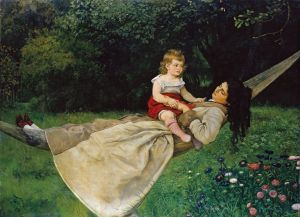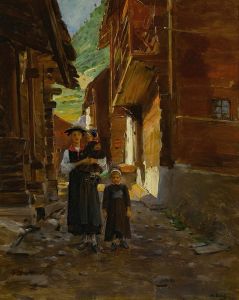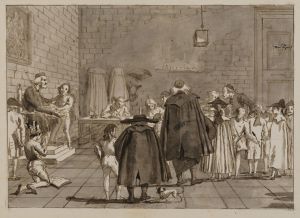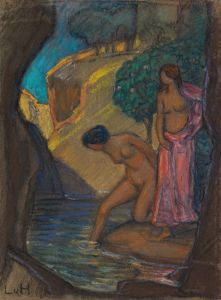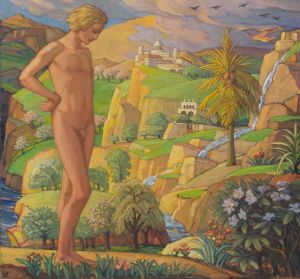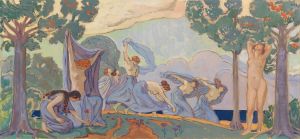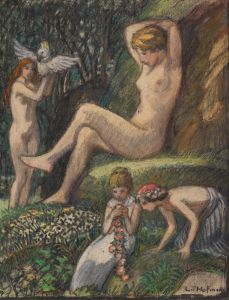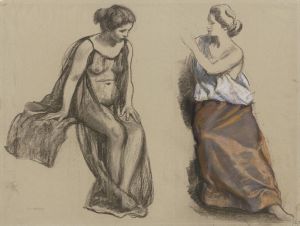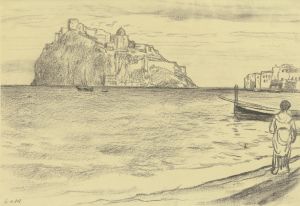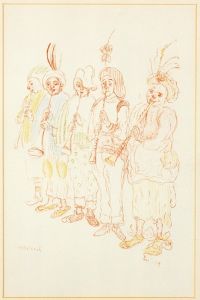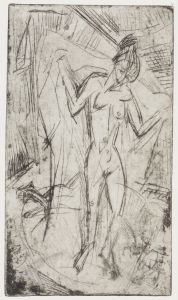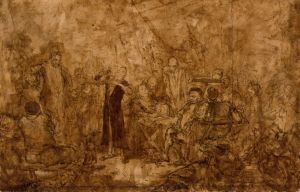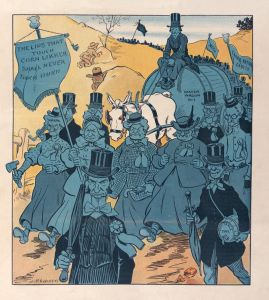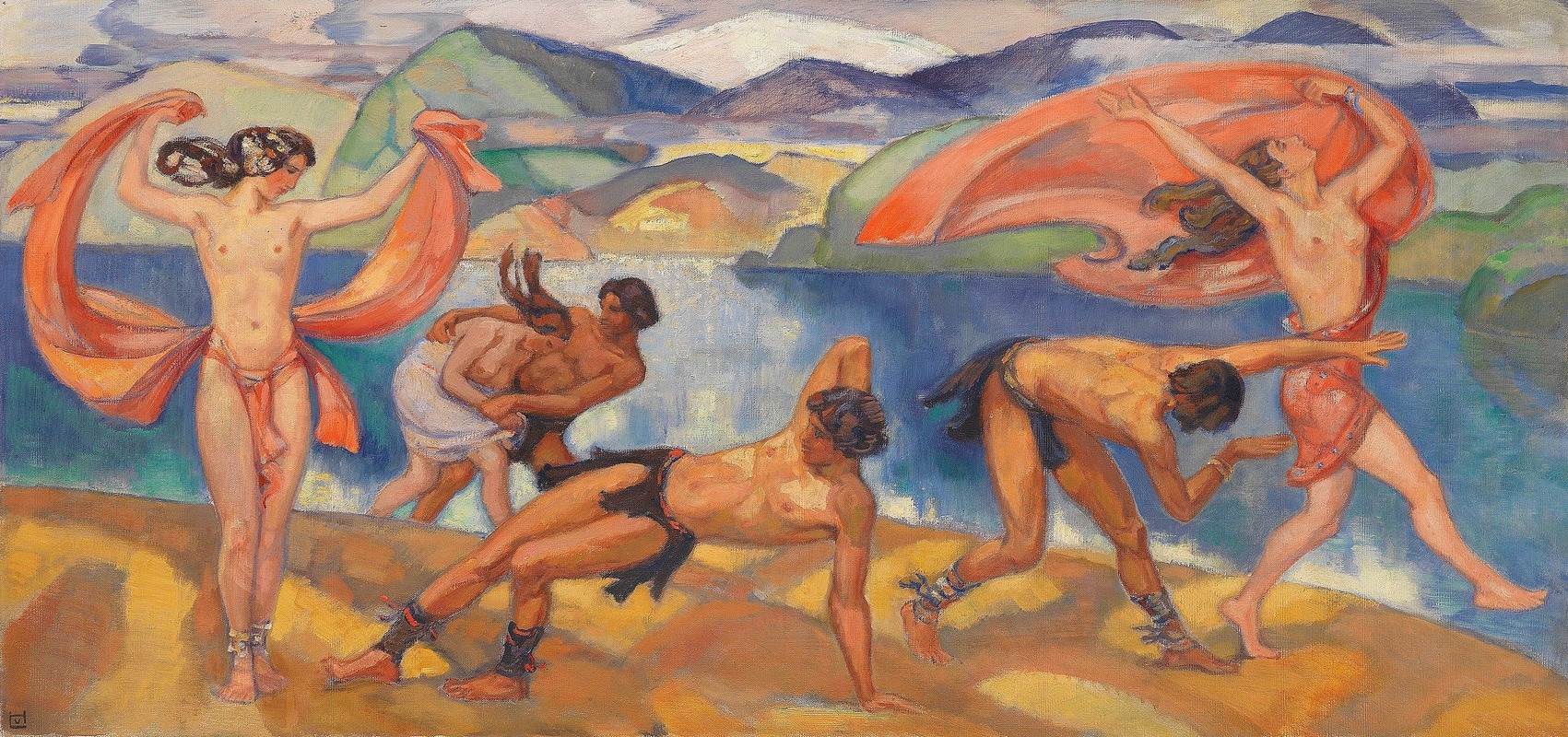
Tanzende in weiter Landschaft
A hand-painted replica of Ludwig von Hofmann’s masterpiece Tanzende in weiter Landschaft, meticulously crafted by professional artists to capture the true essence of the original. Each piece is created with museum-quality canvas and rare mineral pigments, carefully painted by experienced artists with delicate brushstrokes and rich, layered colors to perfectly recreate the texture of the original artwork. Unlike machine-printed reproductions, this hand-painted version brings the painting to life, infused with the artist’s emotions and skill in every stroke. Whether for personal collection or home decoration, it instantly elevates the artistic atmosphere of any space.
Ludwig von Hofmann's painting Tanzende in weiter Landschaft (translated as Dancers in a Vast Landscape) is a notable work by the German painter and graphic artist, who was associated with the Art Nouveau and Symbolist movements. Hofmann, born in 1861 and active until his death in 1945, was known for his idyllic and often dreamlike depictions of nature, youth, and beauty, themes that are prominently reflected in this painting.
The artwork portrays a group of figures dancing in an expansive, open landscape. The scene is characterized by its harmonious composition, where the human forms blend seamlessly with the surrounding natural environment. Hofmann's use of soft, flowing lines and a muted yet luminous color palette creates a sense of serenity and timelessness. The figures, often depicted in graceful, almost ethereal poses, embody the ideals of vitality and freedom, which were central to Hofmann's artistic vision.
Tanzende in weiter Landschaft exemplifies Hofmann's interest in the interplay between humanity and nature. The painting reflects the influence of Symbolism, a movement that sought to convey deeper emotional and spiritual truths through art. Hofmann's work often evokes a sense of utopia, presenting an idealized vision of life that transcends the mundane and celebrates the unity of human beings with the natural world.
Ludwig von Hofmann was a prominent figure in the German art scene during the late 19th and early 20th centuries. He studied at the Dresden Academy of Fine Arts and later at the Académie Julian in Paris, where he was exposed to various artistic movements that shaped his style. His works were widely exhibited and admired during his lifetime, and he held teaching positions at institutions such as the Weimar Saxon-Grand Ducal Art School, where he influenced a generation of artists.
While specific details about the creation date or the current location of Tanzende in weiter Landschaft are not readily available, the painting is representative of Hofmann's broader oeuvre, which often explored themes of harmony, beauty, and the transcendental connection between humans and their environment. His works remain celebrated for their poetic quality and their ability to evoke a sense of wonder and introspection.
Hofmann's legacy continues to be appreciated in the context of German Symbolism and Art Nouveau, and his paintings, including Tanzende in weiter Landschaft, are regarded as significant contributions to the cultural and artistic heritage of the period.





